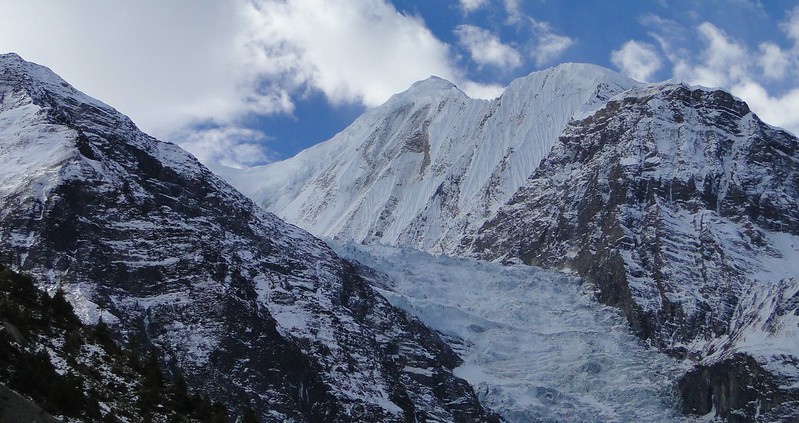 Image courtesy of tcy3282 on Flickr
Image courtesy of tcy3282 on Flickr
Himalayan Glacial Melt: The Looming Security Disaster
The recent glacial flood in the Himalayas devastated the northern Indian state of Uttarkhand, leaving more than 100 people missing and at least seven dead. The rapid freezing and thawing associated with climate change is making these floods occur more often, especially within the fragile Himalayan environment. While massive flooding is certainly a concern associated with these melting glaciers, another is that when the glacial ice is gone, it’s gone permanently, and international competition over fresh water sourced from these glaciers will increase. As a result, the rapid glacial melt in the Himalayas presents a myriad of security and geopolitical challenges for the region and international community.
The recent disaster demonstrates a mounting catastrophe to downstream communities. Glaciers and glacial lakes contain the energy equivalent to several atomic bombs. Indians understandably seek to harness this clean energy source through hydroelectric projects. However, many residents and geologists question whether these hydroelectric projects are exacerbating existing dangers within the sensitive Himalayan area.
These hydroelectric projects can destabilize the ecology of the region, potentially causing landslides and flooding when glacial breaches do occur. A breach releases the stored glacial energy in an uncontained and uncontrollable way, and the resulting flooding destroys infrastructure and lives in its path. While glacial breaches present an acute and devasting risk on their own, they also demonstrate the overall depletion of natural resources for the Himalayan region.
Hydroelectric development in the region has occasionally caused water scarcity. In 2009, workers accidentally punctured an aquifer while constructing one of the dams that recently washed away, draining 18.5 million gallons a day and causing a weekslong water shortage for nearby villages. These dams are intended to create electricity and provide a source of glacial freshwater, but they have inadvertently depleted other fresh water resources within the region exacerbating water scarcity.
As the Himalayan glaciers melt, water scarcity will become more of a geopolitical and geoeconomic issue. The Himalayan glaciers are a major source of fresh water for the region, and China controls the headwaters of 10 major rivers that flow from the Himalayas through 11 countries, including India, Thailand, Bangladesh, and Vietnam. These rivers supply more than 1.6 billion people with fresh water. As the planet warms, Himalayan ice will become scarcer and precious, and China will need more of it. Nearly 1 out of 5 people on Earth live in China, yet only 6% of the planet’s freshwater lies within its borders. China’s influence over fresh water for India and Southeast Asia may help augment its influence in those countries, presenting geopolitical and geoeconomic issues for the US and its allies in the region.
US-led Strategic Partnerships
Given the US’ strategic rivalry with China, relationships in South and South Asia matter greatly to the US. To bolster these relationships, the US should help regional allies develop resilience plans for increased flooding and landslides, as well as water sharing agreements between headwater nations.
The US has demonstrated success in transnational water disputes before. The International Boundary and Water Commission set up by the 1944 Mexican Water Treaty governs the division of water resources in the Rio Grande and Colorado rivers between the US and Mexico. As recently as 2020, disputes between these two nations on water sharing have been successfully resolved through this commission. In the Himalayas, similar collaborative agreements are needed between headwater nations, notably between India and China.
Critical to any water sharing agreement will be effective monitoring. Most Himalayan glaciers and glacial dams are unmonitored. US technical expertise, as a result of monitoring its glaciers and glacial lakes, could be leveraged to enforce agreements. Additionally, monitoring will be helpful for warning systems needed for glacial breaches, landslides, and flooding.
These US-led partnerships can further solidify America’s position in the region and highlight innovative approaches to threats posed by climate change. By acting as a strategic mediator between these nations, the US can emerge as a harbinger of stability and effective resource management.





